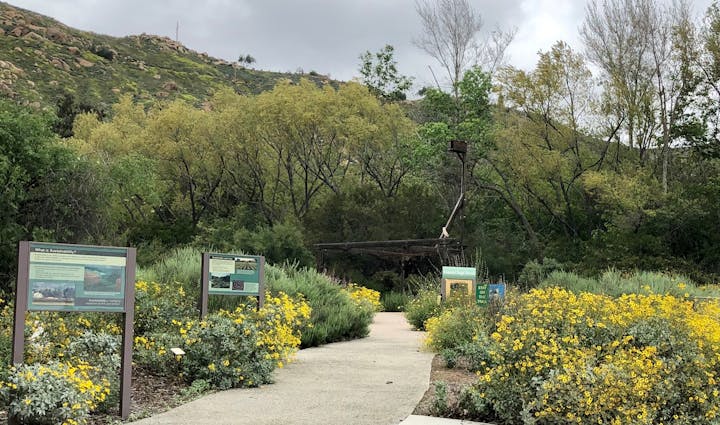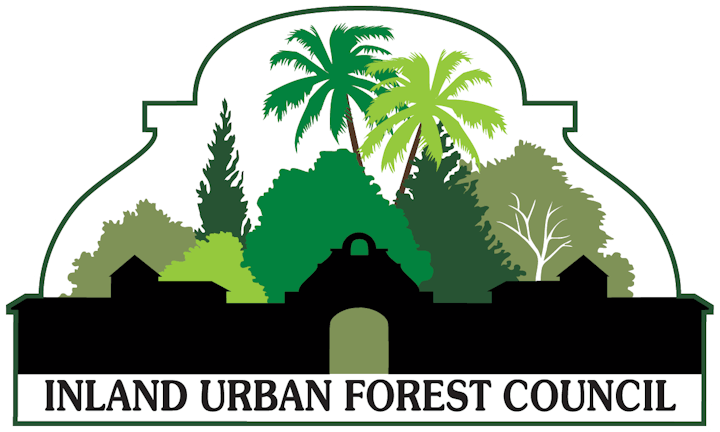Creating Sustainable Urban Areas
Urban areas include the land we use for homes, businesses, and roads. In this section we use the term urban in general, to refer to human habitats, including suburban.
Many problems we face are largely due to the ways we have planned and built urban environments. Those problems include traffic congestion, loss of open space, and degraded air and water quality. We've used land inefficiently. We have paved over prime farmlands, built sprawled communities without providing effective mass transit, and destroyed important habitats, accelerating extinction rates.
In the past, many land use and management decisions were based on immediate economic returns, without full regard for environmental and quality of life costs and considerations. Today, it is essential that we comprehensively evaluate the potential consequences of land use conversion. Some factors to consider include the efficient use of land and natural resources, costs to ecosystem services, community livability, and economic benefits. With more thorough evaluation and planning, we can make meaningful land use decisions and invent sustainable solutions.
As in native habitats, the natural cycles of air, water, nutrients, and energy flow through urban ecosystems. Urban structures often short-circuit natural cycles, interrupting nature's ability to function effectively. We can alter some components of urban environments, to reduce the negative impacts on natural processes.
To become sustainable, we must rethink the ways we: manage, plan, and build urban areas.
Techniques to Better Manage Urban Ecosystems
The natural cycles that exist in nature are often disrupted by urban development. The Mediterranean climate, low rain fall and high population of Southern California can make it challenging to find the solutions necessary to maintain healthy ecosystem cycles. We can assist the cycling of water, nutrients, energy, and air in urban areas through responsible panning and management of urban ecosystems.
Responsible Water Use
In urban areas, the natural water cycle is disrupted by storm drain systems and impervious surfaces like asphalt, rooftops, and concrete. These features increase the amount of storm water runoff that reach waterways. This runoff is unfiltered and rapidly flows from urban areas, bringing with it sediment, pollutants, and debris. As a result, various materials pollute our waterways and less water percolates into the ground to recharge underground water basins. We must reduce impervious surfaces and retain runoff water for greater infiltration. Many solutions can be found in responsible planning and action:
Rain water collection
- Water infiltration at home and business sites can be improved by constructing sunken yards, drainage swales, infiltration trenches, vegetated filter strips, porous paving and "green" roofs.
- Cities and water conservation agencies can route floodwaters into retention basins to replenish underground aquifers and cycle water more effectively.
- We can reduce the volume of runoff by converting impervious surfaces to permeable paving materials, such as gravel, which can be structurally supported by products like Geo-web or Invisible Structures.
- Collect and reuse water, in order to reduce our reliance on expensive imported water.
- Harvest storm water from rooftops and paved surfaces, filter the runoff through vegetation, then collect it in cisterns for later use.
- Encourage homeowners to water their landscapes with gray water (water that comes from washing machines, showers, and sinks).
- Municipalities and farms can irrigate with reclaimed water (water that has been partially treated). If you irrigate large areas at your business or home, explore the availability of reclaimed water for your site.
Plant and manage urban forests
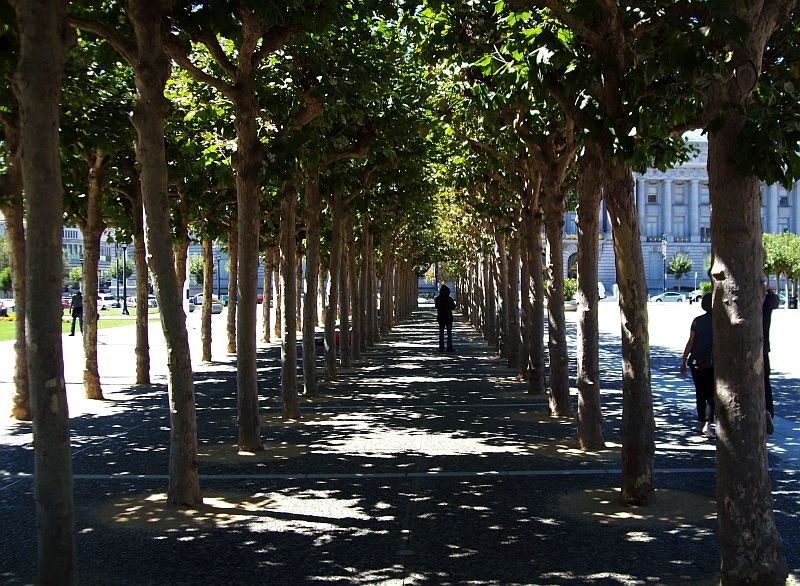
Heat islands are created when vegetation is replaced by heat-absorbing surfaces such as roofs, walls, parking lots, and streets. Heat absorption can raise urban air temperatures 2-8 degrees Fahrenheit. Heat islands accelerate the formation of smog, increase energy demand for cooling, and increase health risks.
Using the ecosystem management approach, we can minimize heat gains by maintaining urban forests. Urban forests are simply trees planted in cities, along streets, around buildings, in parking lots, and in parks. Trees provide cooling shade, reduce noise and wind, trap pollutants, provide wildlife habitat, and are aesthetically pleasing. Drought tolerant and some native trees are appropriate for use in our urban ecosystem as they minimize our need for imported water. In a sustainably managed urban forest, a street tree is harvested at the end of its life and milled into lumber.
A key component of urban forest management is proper pruning strategies., which are highlighted in "A Practical Guide to Tree Pruning."
Find out more about urban forest management by visiting the Arbor Walk in the LandUse Learning Center.
Prevent erosion and sediment
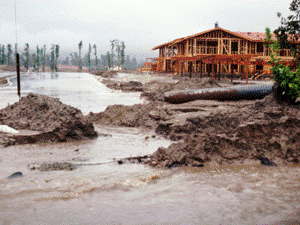
In urban areas, erosion processes are often accelerated by human activities and altered landscapes. Erosion degrades water quality by contributing sediment and pollutants to runoff. Altered landscapes can be treated with a variety of erosion control methods. Reestablishing plants will effectively hold soil. Other methods include mulches, retaining walls, terraces, drain lines, geo-textiles, woven mats, hydro-seeding, and tackifiers.
Sediment and other construction related pollutants can easily enter waterways as runoff. Storm water pollution prevention plans must be required and enforced for construction sites. These plans help ensure that sediment and attached pollutants do not enter waterways. Sediment control methods include silt fences, sand bags, straw bale barriers, sediment traps and basins.
Develop sustainable landscapes at public places, businesses, and homes
Sustainable landscapes incorporate a variety of treatments, depending upon the use of the landscape. They work like natural systems, while accommodating the needs and activities of people. Landscapes become sustainable when we nurture soil, increase biodiversity, and reduce dependence on water. When plants are fertilized and watered properly, they are less susceptible to disease and pests, and fewer pest controls are needed.
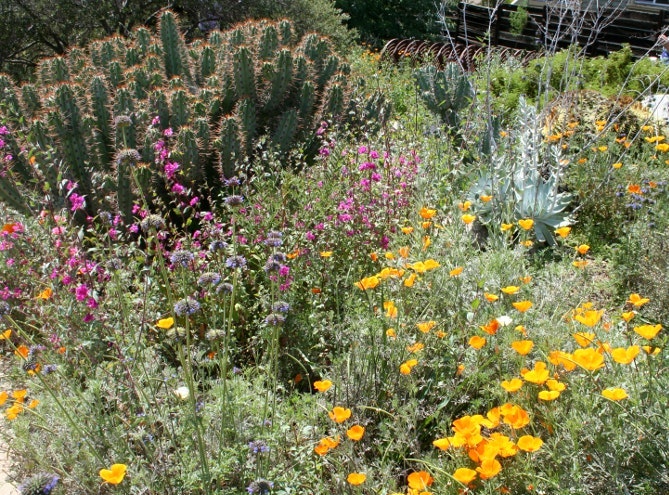
Healthy soil is the foundation of sustainable landscapes. We can improve soil quality by substituting organic matter (dead plant and animal debris) or compost for chemical fertilizers. Organic matter is the storehouse for energy and nutrients used by plants, bacteria, fungi, and other soil organisms that transform and release nutrients. Composting the large amounts of waste produced at our homes and businesses, then utilizing it in our landscapes would aid in healthy soils and reduce the amount of waste sent to landfills each year. Compost is simply decomposed organic matter that has been generated from yard waste and food scraps. Check out your local UC Master Gardener and Waste Management websites for resources and classes on composting.
In addition to healthy soil, the variety of plant species is important in landscapes. Planting the right plants and diversity of plants is essential to conserving water, working in harmony with natural cycles and creating habitat for urban wildlife. Plant diversity provides habitat for beneficial insects that help control pests, leading to lower usage of pesticides. By incorporating native plants, we create habitat for native birds, lizards, butterflies, and more. Often, sustainable urban landscapes produce food for people, as well as for urban-adapted wildlife. Check out the California Native Plant Society website or CalScape for more information on native and edible plants appropriate for your locale.

